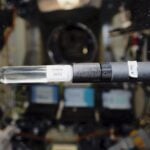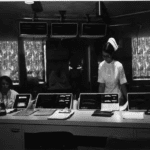Langley Research Center’s Soluble Imide (LaRC-SI) compound for medical applications
Inducted In: 2016, Health, Medicine
Like so many prized finds, this discovery was unexpected. While at NASA Langley developing materials for high-speed civil transport and lightweight rocket bodies, Dr. Robert Bryant noticed that an experimental polymer that should have turned into a powder instead remained soluble. Others repeated his experiment with the same results.
When Dr. Bryant left the research program there were no known applications for the material, but he continued research and developed what is now known as LaRC-SI: a durable thermoplastic readily fabricated in very thin form. The critical characteristic that lead to medical applications is that it is biologically non-reactive and solvent resistant.
Once Bryant had refined production of the compound, several NASA centers began exploring applications, including small mechanical parts, flexible circuits, advanced fiber and ceramic matrix composites and durable coatings.
Medtronic became aware of the material and its unique qualities when LaRC-SI was recognized as an ‘R&D 100’ award winner.
Headquartered in Dublin, Ireland, with operational headquarters in Minnesota, Medtronic is a medical device company with a core business segment focused on electrical stimulation to treat irregular heartbeats.
Medtronic was interested in replacing the insulation layer applied to leads carrying electrical impulses directly to the heart. LaRC-SI showed great promise. Convinced of the enormous benefits of this new material, Medtronic spent more than 10 years and tens of millions of dollars to secure FDA approval.
The new insulation revolutionized the treatment of heart irregularities. The thinner, more flexible material allowed surgeons to get electrical impulses into areas previously too difficult to reach. And the more resilient new insulation significantly reduces lead failure over time and the number of high-risk procedures to correct the problem. In short, LaRC-SI use has led to decreased mortality rates and improved quality of life for thousands of people.
Since receiving FDA approval in 2010, more than 660,000 of the new leads have been sold and Medtronic continues research of LaRC-SI use in other medical devices.
Related Technologies

Bubble Detector
Inducted In: Featured, Health, Public Safety
Canada’s Bubble Technology Industries (BTI) created the Bubble Detector to detect and record levels of neutron radiation exposure to humans. The detector is a small vial about the size of your thumb. It is small enough and portable enough to…

Apollo 70 Cardiac Care Monitoring System
Inducted In: Featured, Health, Medicine
Founded in 1958, Spacelabs Healthcare approached NASA with their concept of a real-time system for monitoring astronauts’ vital signs while in orbit, including a telemetry system to simultaneously transmit the data back to Earth. From 1962 to 1967, Spacelabs was…

Programmable Implantable Medication System
A family of biomedical implantable devices have been developed over the past decade which are based on a wide array of space technologies, including battery advances, miniaturized circuitry, digital telemetry, and electronic sensing systems. The initial device was the rechargeable…
